10 years ago, we celebrated the 50th anniversary of Doctor Who with a fantastic exhibition. Doctor Who and Me: 50 years of Doctor Who Fans celebrated its fans, their stories and their collections. Approximately 200 objects of different sizes and materials went on display, including a life size Dalek, Tardis and Cyberman—all of which I knew nothing about. I moved to the UK in 2013, and what a way to be introduced to such a pivotal part of British popular culture!
Now, 10 years on, and to celebrate the 60th anniversary of Doctor Who, I will take you on a journey through how we look after the objects that made its unforgettable theme tune, which to me is one of the most gripping things about Doctor Who. The theme tune was made at the BBC’s Radiophonic Workshop and the objects used to make it are part of our permanent collection.
Conserving the Radiophonic Workshop Collection
The Radiophonic Workshop collection is composed of various musical instruments, such as drumsticks and bells, but also everyday objects like a chopstick, a lampshade and washers. They originally arrived to us in three boxes containing over 50 objects.
Part of my job as conservator is caring for them to ensure they are preserved while in storage and on display at the museum. Here are some improvements we made to guarantee their long-term care.
Replacement of inappropriate boxes with conservation-grade boxes
This means that all the materials used to make the new boxes have been tested and approved for use in contact with collection objects. They are inert and will not contribute to the further deterioration of the objects. The boxes I used are made of sturdy, chemically stable and heat resistant corrugated plastic. They also keep the objects away from dust.
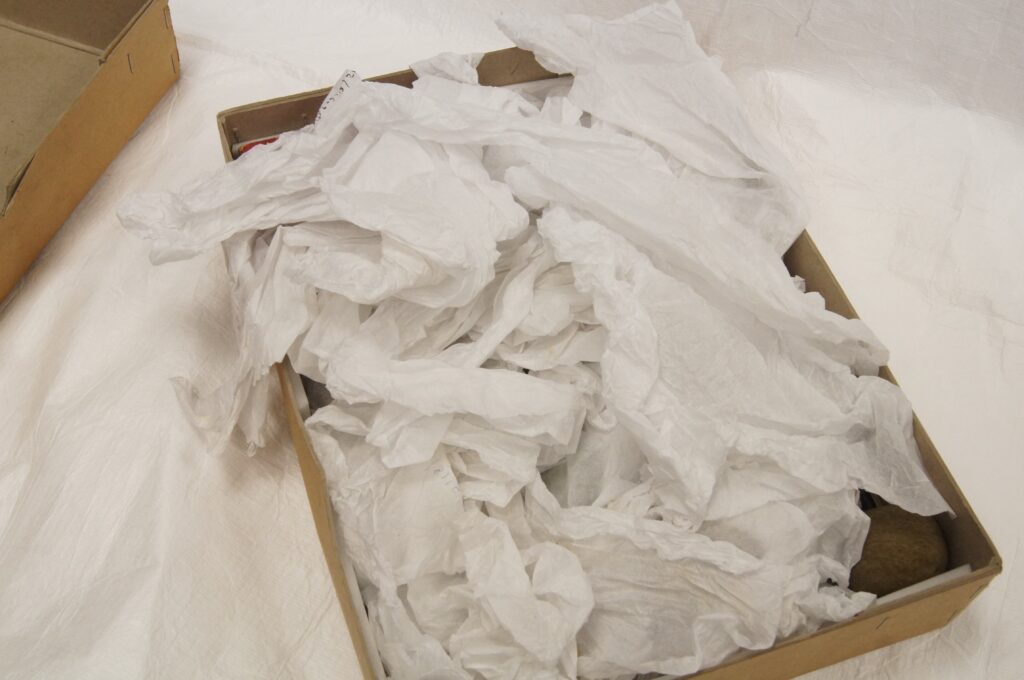
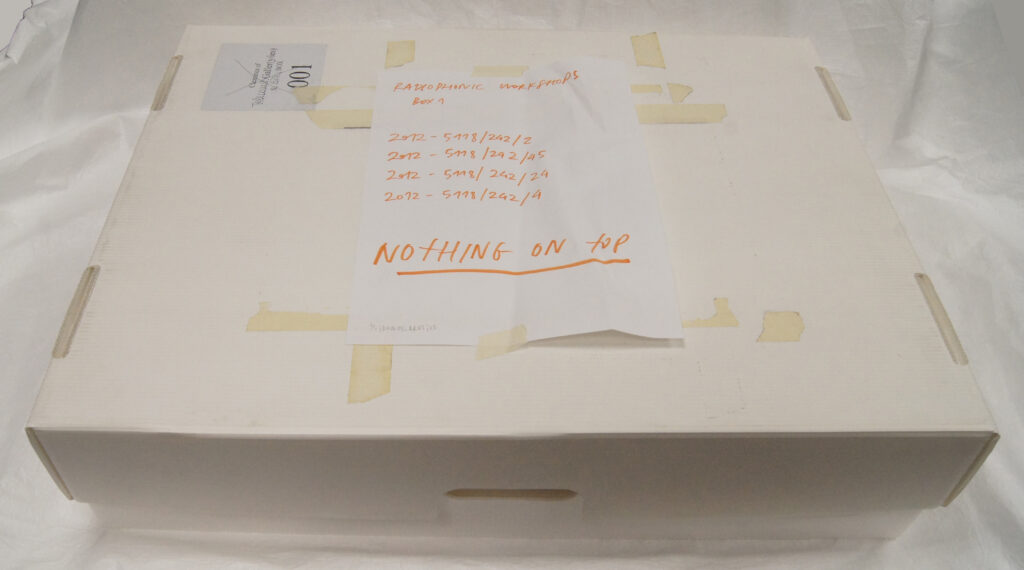
Increased visibility of objects inside the box
I used dense, inert and acid-free foam and unbleached cotton tying tape to secure the objects in place. Importantly, all the objects inside each box are visible from the moment its lid is lifted—there is no overcrowding or overloading.
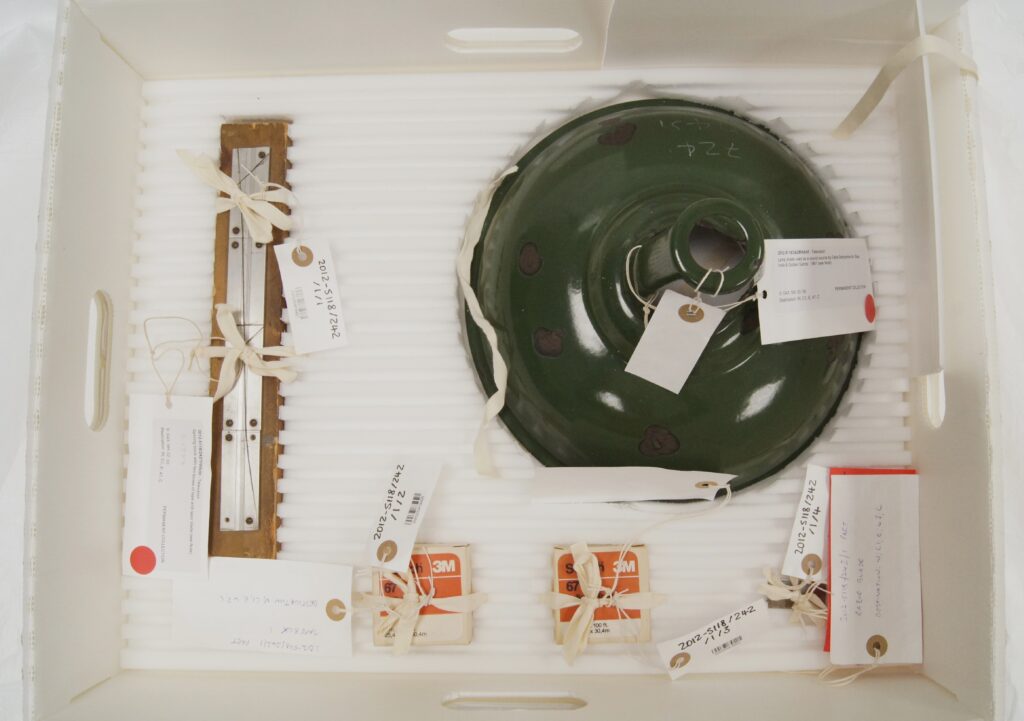
All objects are labelled with their unique identification number
This minimises the unnecessary handling of objects. The labels are water and tear-proof, acid-free and inert. The pens used are also archival, acid-free, UV-resistant and waterproof.
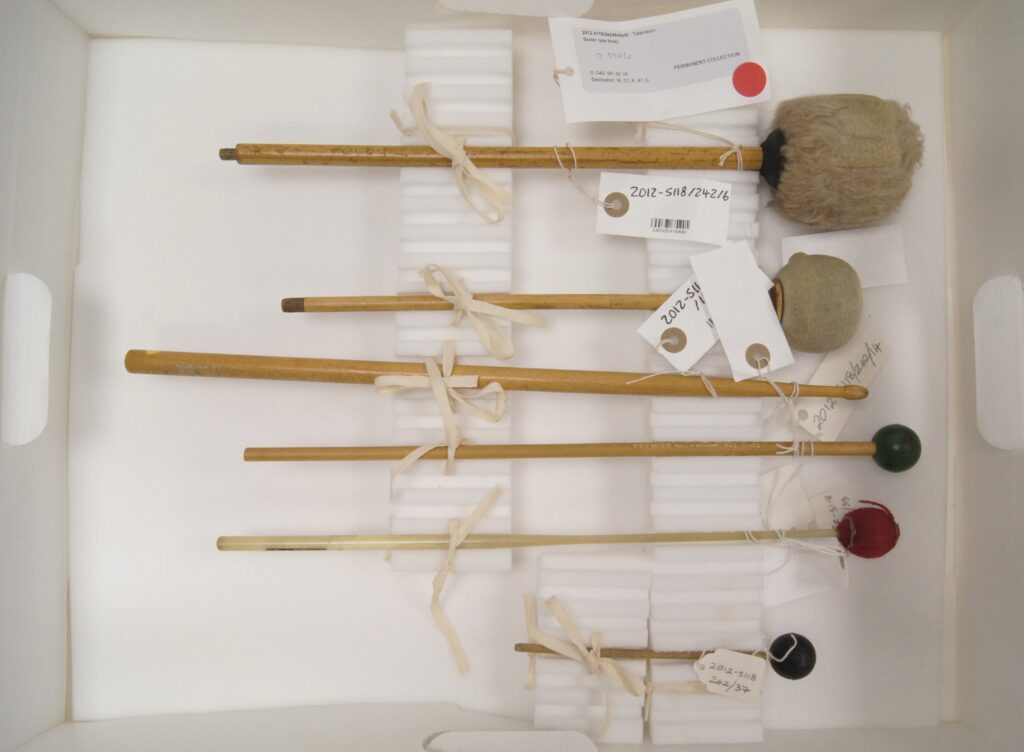
Careful handling
Throughout the process we use nitrile gloves to avoid transferring fingerprints to the surface of the objects, since the oils and sweat in our skin can become permanently etched onto the surface of objects.
Object are kept in a stable environment
I regularly monitor the humidity and temperature within the stores. By doing so I avoid the occurrence of corrosion to metal components or splitting of wooden joints. The new boxes also act as a barrier to any fluctuations in the environment.
Preparing objects for an exhibition
A selection of Radiophonic Workshop objects was recently on display in our exhibition Sonic: Adventures in Audio, an exciting display of the world of sounds and sound technologies.
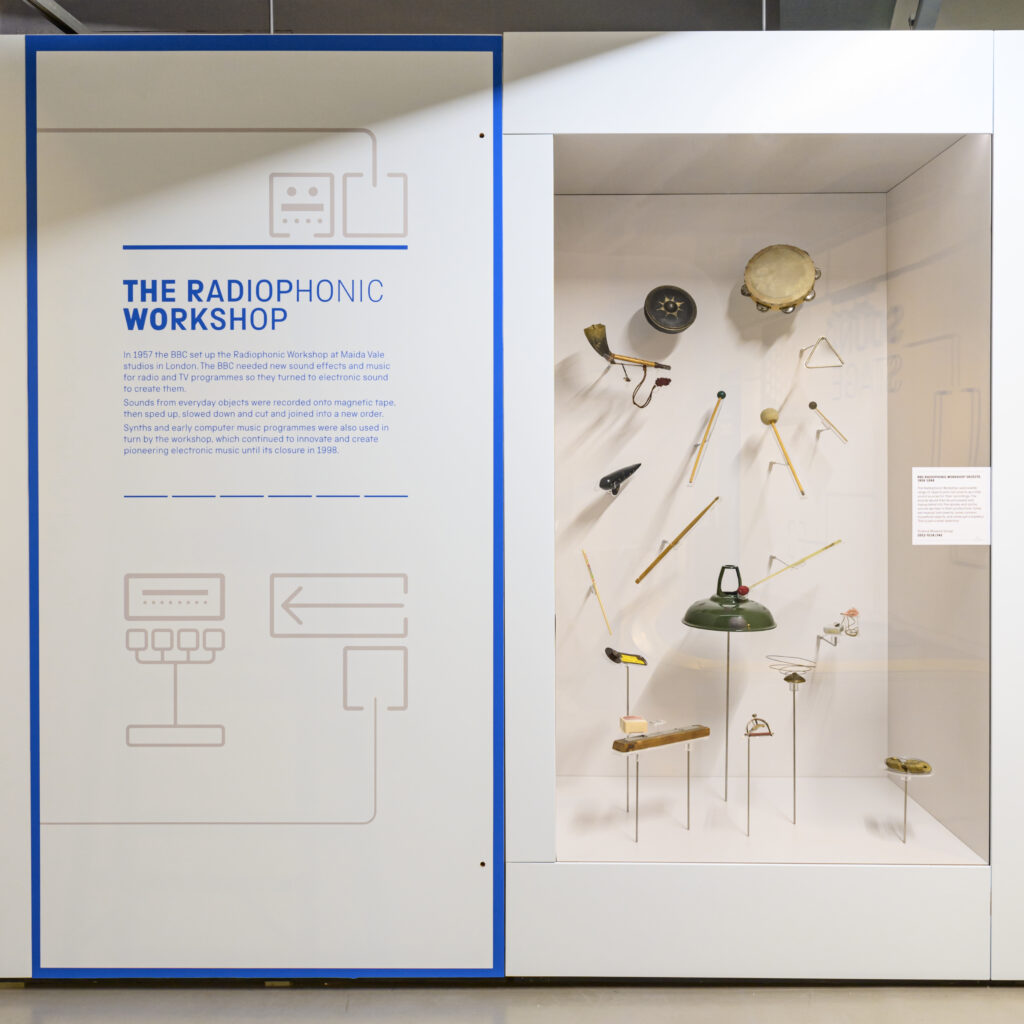
Prior to the display of any object on our exhibitions, conservators assess their stability by considering:
Object condition
A detailed condition report is carried out. Current condition information is recorded in our database and checks are performed at the end of each exhibition to monitor any changes before we return objects to the stores.
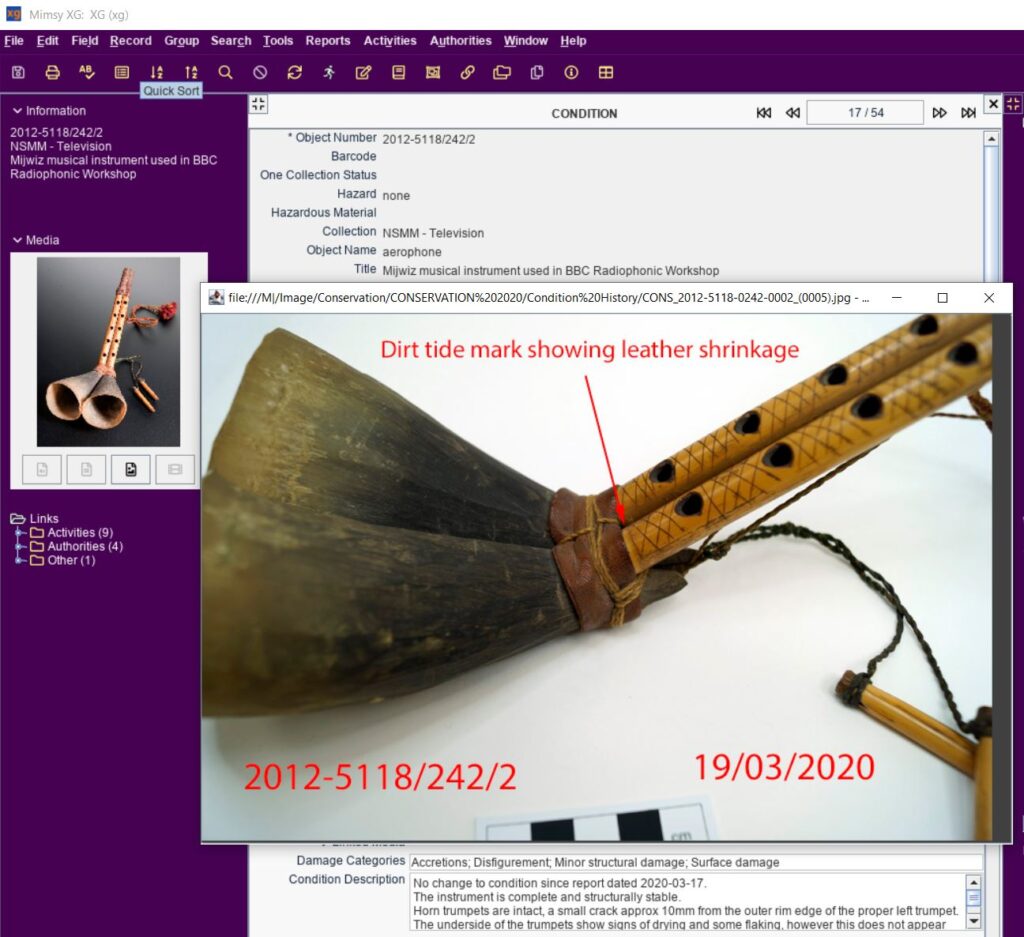
Object support
We seek to showcase our objects in the most interesting, engaging and accessible way possible without compromising their safety. This can be done in many ways, and we frequently use acrylic mounts. They are robust, lightweight, clear and inert. These supports are often made to measure, following the shape of the objects, making them ‘float’ in from of your eyes.
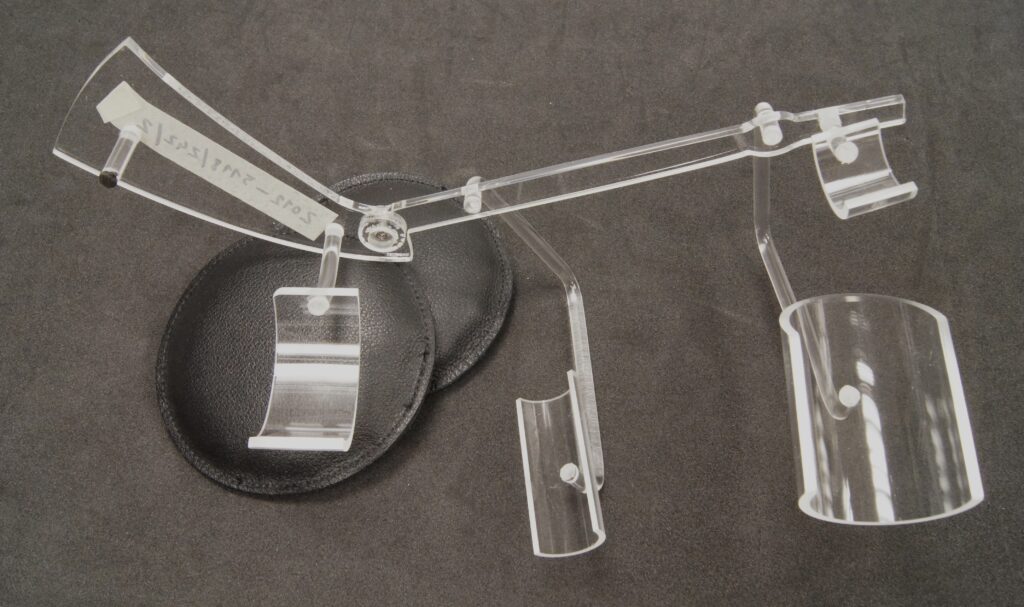
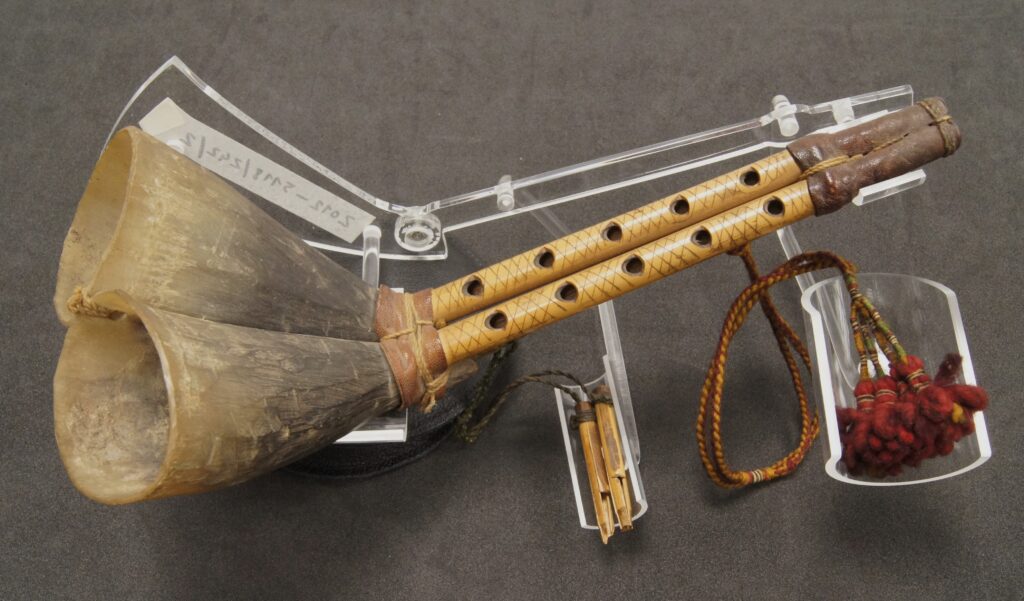
Object sensitivity to light exposure
Some materials—such as paper, photographs, textiles—can be sensitive to the light in our galleries. Other materials, like wood, metals, glass and some plastics, are less sensitive. Conservators always measure the light levels in the exhibition spaces to preserve the objects on display against light damage, and that’s why at times, some sections of galleries are kept darker than others.
So, as the nation patiently waits for the new Doctor Who’s special episodes—and I sit to watch for my very first time—I’ll rest easily thinking that some things from Who’s history will be preserved forever (ish).
